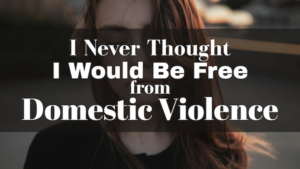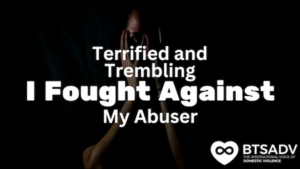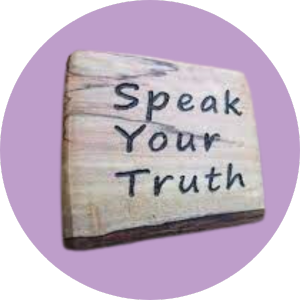By Cerelia Abram
If they wouldn’t drink or use drugs, they wouldn’t be abusive.
Although substance abuse can increase the severity and frequency of abusive episodes, substance abuse does not cause domestic violence. Any treatment for alcoholism or drug abuse will not cure abusive behavior.
If anything, substance abuse serves as an excuse for abusers to use in order to justify their behavior.
Laws are there to protect victims and if they wanted to get away, the law would protect them.
In the justice system, making threats is generally a misdemeanor offense, often resulting in jail time. Until someone is physically hurt (or murdered), there is little the police do to protect victims and their families.
This acts as a tool of control that deters victims from leaving. Victims might have to walk away from everything they have and the abuser might benefit by gaining all of those possessions.
Shelters are often the only choice victims have to assure their safety. They are forced to leave behind their entire lives—family, friends, schools, jobs, pets—to hide out. It says to victims that while they must uproot their entire lives for safety, abusers do not have to do anything.
Also, the first few weeks after leaving an abuser is the most dangerous time to be in an abusive relationship, with victims 70 times more likely to be killed than at any other point in the relationship.
If domestic violence was really a problem, I’d hear about it more on the news.
Domestic violence is more common than you may think and occurs more frequently than it is reported. In the United States, one in four women and one in seven men have been physically, verbally, or financially abused by an intimate partner.
Despite these shocking statistics, stigma around domestic violence causes victims to feel ashamed and hide the abuse.
I know their “so-called abuser” as a caring and loving person. They couldn’t be abusive to their partner if I don’t see it.
Victims of domestic violence often believed in the beginning of the relationships that their abuser was that caring and loving person and throughout the relationship, abusers continue to exhibit this behavior.
This behavior is typical for abusers and contributes to the cycle of abuse. In the cycle of abuse, an incident occurs, like hitting someone, cursing and yelling at them, or manipulating them. In order to get back on their victim’s “good” side, an abusive incident is followed by a “honeymoon” period. This is where the abuser is kind, romantic, and apologetic for their behavior. They swear it will never happen again. This positive behavior may remind the victim of what their relationship once looked like and helps persuade them to stay. It’s a highly effective manipulation technique.
Acting so charismatic is part of what allows abusers to get away with their behaviors.
My partner doesn’t exhibit narcissistic, sociopathic or other behaviors prone to violence and I am not the submissive type to tolerate that kind of abuse. Therefore, I could never be a victim of domestic violence.
While there are identified personality types common among some abusers (narcissistic, borderline, antisocial, and disorders), there is no strong link between psychopathology or any mental illness and domestic abuse. There is also no definitive profile of an abuse victim.
If I’ve had one abusive partner, I’ll surely attract others
There is no personality trait in victims that attracts abusers. It is the abuser’s choice to use abusive behaviors and nothing about the way the victim acts or behaves will change that.
If they didn’t grow up with an abusive family, they won’t be abusive.
Some men and women who are abused as children or who witness abuse continue that cycle in adulthood. Others do not. Child abuse is not a strong indicator that a partner will be abusive or will tolerate abuse. That said, abusive behavior is a learned behavior and children who witnessed their parents’ domestic violence are twice as likely to carry on that behavior.
They are not “physically abusive” so they would never kill me.
While female victims whose partners threatened them with murder were 15 times more likely than other women to be killed, many times victims didn’t believe or didn’t want to believe their partners were capable of murdering them. Each year in the U.S., 1,500-1,600 victims of domestic abuse are killed by their abusers. Also at risk in any highly-charged domestic violence situation are family members, neighbors, friends, bystanders, and law enforcement. These responders who intervene account for 20% of domestic violence fatalities.
The presence of a gun in a domestic violence situation increases the risk of homicide by 500%.
Anyone can take an online assessment to determine their risks here.
My abuser is a good parent. They aren’t abusive towards my children.
One in 15 children are exposed to intimate partner violence each year and 90% of these children are eyewitnesses to this violence.
Exposure to domestic violence is a form of child abuse and that includes emotional and mental abuse, as well as neglect. Abusers and victims may try to hide the abuse from the children, but its effects are felt by everyone in the house. If a victim of domestic violence does not take action to protect their children from an abusive environment, the abuser, as well as the victim, can be held legally accountable.
If only we got counseling, everything would be different.
Couples counseling is often suggested as a way to stop abuse within a relationship, but it is not an effective method for stopping abuse. Often times, abusers use couples counseling as a way to place blame on the victim or minimize the abuse.
Couples counseling only works when there are problems with the relationship. Abuse is something the abuser chooses to do.
My partner can change. Love changes people.
This is a hard lesson to learn for victims of domestic violence and another major fallacy. With little else to hold on to, victims cling to the idea that if they love someone enough, they can help them overcome abusive behavior. Unfortunately, if an abuser is invested in controlling through fear and intimidation, it is a behavior so deeply embedded in them that it is not something the most loving victim will fix.
Women are not as violent as men.
Just as any person can be a victim of domestic violence, any person can also be an abuser. This means that women can be as violent as men and women can be abusers.










